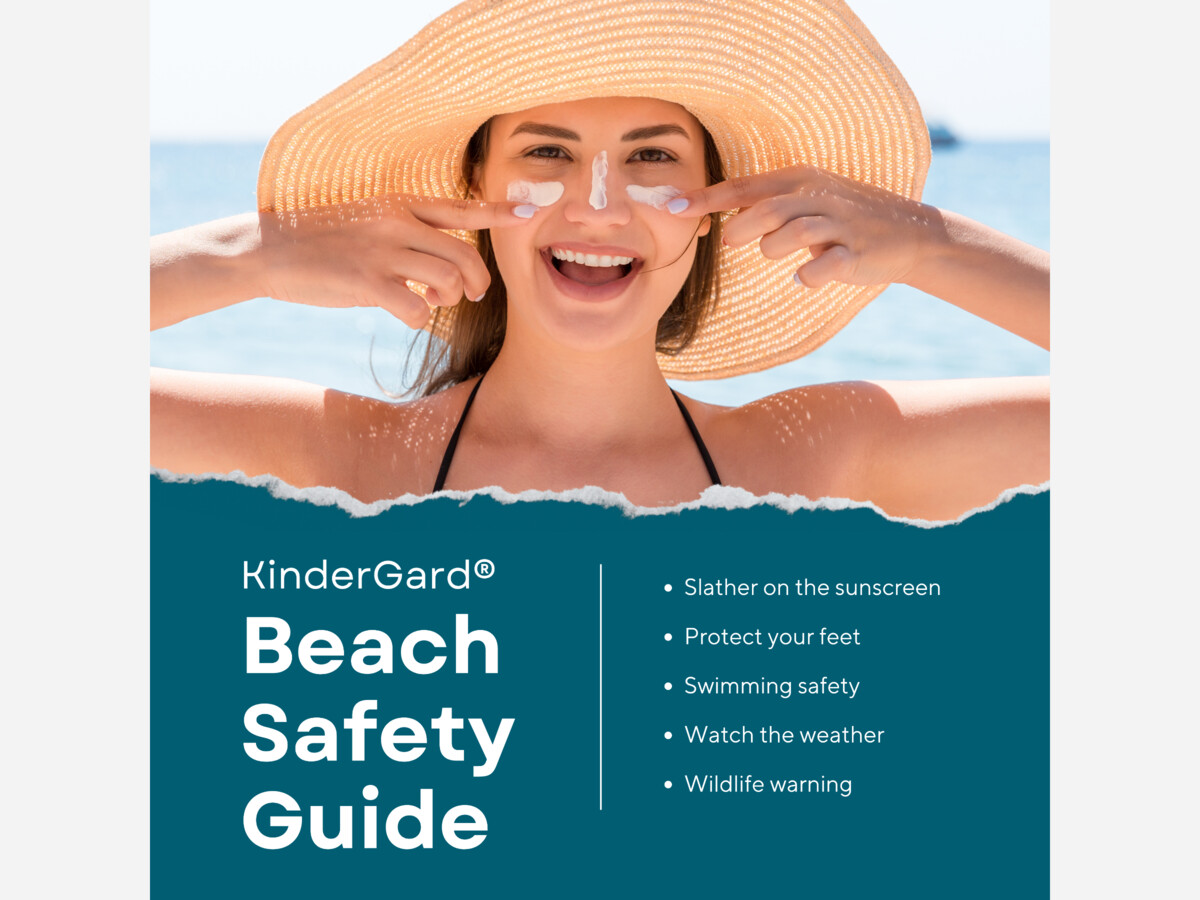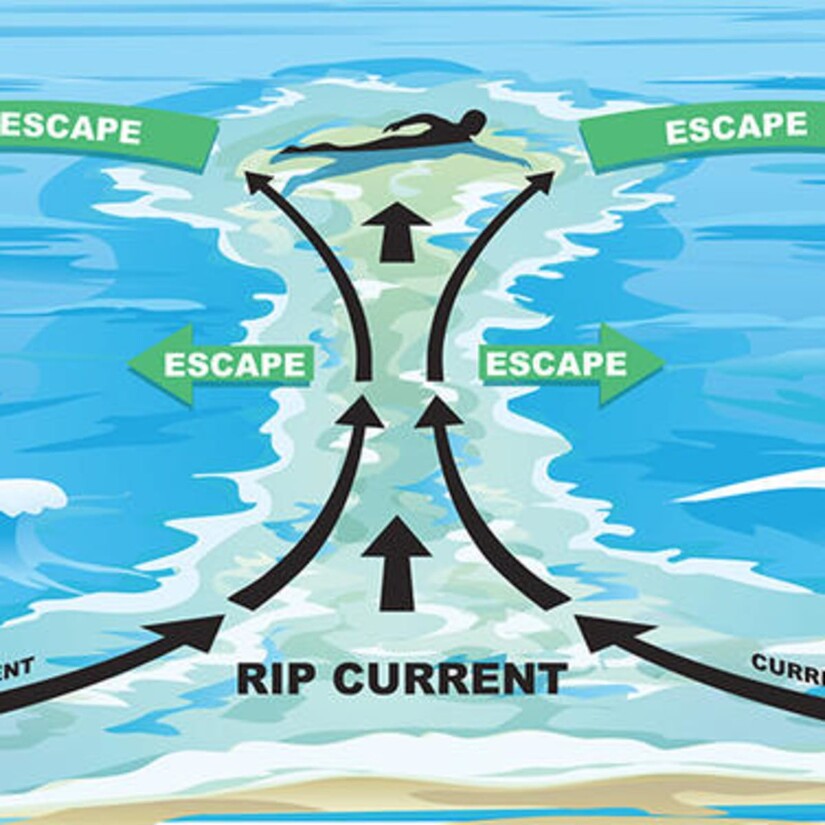Image

KinderGard is based on the Gulf Coast of Tampa Bay, Florida. Every year along the coast there are multiple, preventable casualties from family members getting trapped in riptides to kids getting sunburned at best, or drowning at worst. Here’s some practical tips for you to consider as you make plans for your beach excursions, especially with kids.
What is a RIPTIDE? If you didn’t grow up near the Gulf of Mexico or an ocean, you may not know (and your kids may not know) what a riptide is. Before we can solve this danger, we need to understand, and the kids need to understand what it is.
A riptide, also known as a rip current, is a strong and fast-moving channel of water that flows away from the shore and into the ocean. It is caused by the interaction of waves, wind, and the shape of the ocean floor, and can occur at any beach with breaking waves.

Riptides are dangerous because they can pull swimmers away from the shore and out to sea, making it difficult to swim back to safety. They can be particularly strong and fast-moving during high surf conditions, and can be difficult to see from the surface.
It’s important to be aware of riptides and to always swim at beaches with a lifeguard on duty. If you do get caught in a riptide, it’s important to stay calm, conserve energy, and swim parallel to the shore until you are out of the current.
The number of deaths caused by riptides varies from year to year and depends on a number of factors such as weather conditions, beach usage, and beach safety measures. According to the United States Lifesaving Association, an average of 100 people die each year in the United States due to rip currents, and many more are rescued after getting caught in them.
Teaching kids what to do in a riptide is an important safety lesson, and there are a few key points to keep in mind:
Now lets talk about some basic safety precautions and reminders as you get ready to take your kids to the beach.
Sunscreen: Apply sunscreen with an SPF of at least 30 to protect against harmful UV rays. Reapply every two hours and after swimming or sweating. Also make sure you have a plan to protect your feet. Sometimes Northerners (and even locals) forget how hot the parking lots and beach sand can be. Make sure you all have good flip flops, sandals or water shoes!
Weather : Weather along the coast can change more rapidly than you may think. Study the local weather forecasts in the morning, and have a decent weather app on your phone with localized emergency alerts. The rain along the Gulf Coast can come up quickly, and be more vicious than the gentle summer rains you may be used to back home. Don’t let the mid-morning sun fool you. Along the Gulf Coast we have storms nearly every day, varying in intensity and duration. Plan accordingly.
Hydration: Encourage kids to drink plenty of water to stay hydrated, especially during hot weather.
Life Jackets: Children who cannot swim or are inexperienced swimmers should always wear life jackets while in or around the water.
Swim in designated areas: Look for designated swimming areas and stay within them. Teach children to always swim with a buddy and never alone.
Keep an eye on children: Keep a watchful eye on children at all times, even if they are good swimmers. Drowning can happen quickly and quietly, so it’s important to stay vigilant.
Check for hazards: Look for any potential hazards such as rocks, sharp objects, or strong currents before allowing children to enter the water.
Be prepared for emergencies: Always bring a first aid kit and know the location of the nearest emergency services. In case of an emergency, call 911 immediately.
Keep sand out of eyes: To prevent irritation and infection, encourage children to wear sunglasses and avoid rubbing their eyes with sandy hands.
Set boundaries: Set clear boundaries for children including visual markers while the are on land, and while they are in the water. Teach kids to respect the beach, the power of the water and other people’s space.
Wildlife warning : Your kids may ask if there are alligators in the Gulf of Mexico. The answer to the question is “not usually.” Alligators are fresh water animals so they will not frequent saltwater like the Gulf waters, but it’s not impossible. More likely, jellyfish are the most frequent wildlife disrupters in the Gulf. Other than that, it would be a rare occurrence for you to encounter anything more aggressive during your trip to the Florida beaches. Stingrays might make an occasional shallow water appearance, but sharks seldom frequent the swimming shallows. Keep your eyes out for one of the several species of dophins you may have a chance to see in the wild waters on your trip!
According to the Florida Department of Health’s Injury Prevention Program, drowning is the leading cause of unintentional injury death among children ages 1-4 in Florida. Additionally, the Florida Department of Health’s Injury Surveillance System reported that between 2015 and 2019, there were 2,700 fatal unintentional drowning incidents in Florida across all age groups. It’s important to always prioritize safety when swimming or participating in water activities.
(c) KinderGard, 2023. Reprinted with permission.